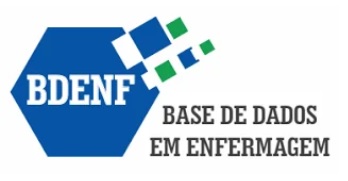The Use of Information and Communication Technologies for Teaching about Pain
A Scoping Review
Keywords:
health personnel, students, health occupations, educational technology, information technology, painAbstract
Objective: To identify the use of Information and Communication Technologies (ICT) to teach about pain and the methods for offering ICTs to students and health professionals. Method: This is a scoping review. The literature search was conducted in January 2019 on PubMed, CINAHL, Scopus and VHL databases. Results: 717 references were reviewed, of which 34 studies were included. There was a prevalence of courses tailored to nurses and nursing students. Courses mainly focused on pain in adults and were comprised of games, videos, simulations, and images. In general, positive feedback was provided by users. Conclusion: The literature describes a limited amount of pain-related ICT. Results from this review indicated benefits related to using ICT in pain education and training, as well as broad acceptance by users. The use of ICT is an innovative alternative for health education and training for pain teaching and other specialties.
References
International Association for the Study of Pain. IASP pain terminology. 2008.
Carr ECJ, Briggs EV, Briggs M, Allcock N, Black P, Jones D. Understanding factors that facilitate the inclusion of pain education in undergraduate curricula: Perspectives from a UK survey. Br J Pain. 2016;10(2):100-7. DOI: https://doi.org/10.1177/2049463716634377
Alemán JLF, Carrillo de Gea JM, Mondéjar JJR. Effects of competitive computer-assisted learning versus conventional teaching methods on the acquisition and retention of knowledge in medical surgical nursing students. Nurse Educ Today. 2011;31:866–71. DOI: https://doi.org/10.1016/j.nedt.2010.12.026
Freire LM, Paula MA, Duarte ED, Bueno M. Distance education in neonatal nursing scenarios: a systematic review. Rev Esc Enferm USP. 2015;49(3):515-21. DOI: https://doi.org/10.1590/S0080-623420150000300021
Moore JL, Dickson-Deane C, Galyen K. e-Learning, online learning, and distance learning environments: Are they the same?. Internet High Educ. 2011;14:129–35. DOI: https://doi.org/10.1016/j.iheduc.2010.10.001
Rodrigues RCV, Peres HHC. A panorama of Brazil’s online nursing teaching. Rev Esc Enferm USP. 2008;42(2):298-304. DOI: https://doi.org/10.1590/S0080-62342008000200013
Prado C, Santiago LC, Silva JAM, Pereira IM, Leonello VM, Otrenti E, et al. Ambiente virtual de aprendizagem no ensino de Enfermagem: relato de experiência. Rev Bras Enferm. 2012;65(5):862-6. DOI: https://doi.org/10.1590/S0034-71672012000500022
Ruiz JG, Mintzer MJ, Leipzig RM. The impact of e-learning in medical education. Acad Med. 2006;81(3):207-12. DOI: https://doi.org/10.1097/00001888-200603000-00002
Cook DA, Garside S, Levinson AJ, Dupras DM, Montori VM. What do we mean by web-based learning? A systematic review of the variability of interventions. Med Educ. 2010;44:765–74. DOI: https://doi.org/10.1111/j.1365-2923.2010.03723.x
Pereira ATC, Schmitt V, Dias MR, Álvares C. Ambientes virtuais de aprendizagem. In: Pereira, ATC, editor. Ambientes virtuais de aprendizagem: em diferentes contextos. Rio de Janeiro: Editora Ciência Moderna; 2007. p.2-22.
Arksey H, O’Malley L. Scoping studies: towards a methodological framework. Int J Social Res Methodol. 2005;8(1):19-32. DOI: https://doi.org/10.1080/1364557032000119616
Levac D, Colquhoun H, O’Brien KK. Scoping studies: advancing the methodology. Implementation Science. 2010;5:69. DOI: https://doi.org/10.1186/1748-5908-5-69
Moher D, Liberati A, Tetzlaff J, Altman DG, The PRISMA Group.Preferred Reporting Items for Systematic Reviews and Meta- Analyses: The PRISMA Statement. PLoS Med. 2009; 6(7):e1000097. DOI: https://doi.org/10.1371/journal.pmed.1000097
Lizarondo L, Stern C, Carrier J, Godfrey C, Rieger K, Salmond S, et al. Mixed methods systematic reviews. In: Aromataris E, Munn Z, editors. Joanna Briggs Institute Reviewer’s Manual. The Joanna Briggs Institute, 2017. Capitulo 8. Avaliable from: https://bit.ly/2m2N016
Huckstadt A, Hayes K. Evaluation of interactive online courses for advanced practice nurses. J Am Assoc Nurse Pract. 2005;17(3):85-89. DOI: https://doi.org/10.1111/j.1041-2972.2005.00015.x
Dy SM, Hughes M, Weiss C, Sisson S. Evaluation of a web-based palliative care pain management module for housestaff. J Pain Symptom Manage. 2008;36(6):596-603. DOI: https://doi.org/10.1016/j.jpainsymman.2007.12.009
Yanni LM, Priestley JW, Schlesinger JB, Ketchum JM, Johnson BA, Harrington SE. Development of a comprehensive e-learning resource in pain management. Pain Med. 2009;10(1):95-105. DOI: https://doi.org/10.1111/j.1526-4637.2008.00511.x
Alvarez AG, Dal Sasso GTM. Aplicação de objeto virtual de aprendizagem, para avaliação simulada de dor aguda, em estudantes de enfermagem. Rev. Latino-Am Enfermagem. 2011;19(2):1-9. DOI: https://doi.org/10.1590/S0104-11692011000200002
Puljak L, Sapunar D. Web-based elective courses for medical students: an example in pain. Pain Med. 2011;12:854-63. DOI: https://doi.org/10.1111/j.1526-4637.2011.01104.x
Borglin G, Bohman D. An online learning module improves specialist palliative care nurses’ pain assessments and patient-reported pain. Evid Based Nurs. 2015;18(4):122. DOI: https://doi.org/10.1136/eb-2014-102006
Phillips JL,Heneka N, Hickman L, Lam L, Shaw T. Impact of a novel online learning module on specialist palliative care nurses’ pain assessment competencies and patients’ reports of pain: results from a quasi-experimental pilot study. J Palliat Med. 2014;28(6):521-29. DOI: https://doi.org/10.1177/0269216314527780
Slaughter AL, Frith K, O’Keefe L, Alexander S, Stoll R. Promoting best practices for managing acute low back pain in an occupational environment. Workplace Health Saf. 2015;63(9):408-14. DOI: https://doi.org/10.1177/2165079915589034
Friesgaard KD, Paltved C, Nikolajsen L. Acute pain in the emergency department: Effect of an educational intervention. Scandinavian Journal of Pain. 2017;15:8–13. DOI: https://doi.org/10.1016/j.sjpain.2016.11.004
Phillips JL, Nicole Heneka, Hickman L. Lam L. Shaw T. Can A Complex Online Intervention Improve Cancer Nurses’ Pain Screening and Assessment Practices? Results from a Multicenter, Pre-post Test Pilot Study. Pain Management Nursing. 2017;18(2):75-89. DOI: https://doi.org/10.1016/j.pmn.2017.01.003
Bonkowski SL, Gagne JC, Cade MB, Bulla SA. Evaluation of a Pain Management Education Program and Operational Guideline on Nursing Practice, Attitudes, and Pain Management. J Contin Educ Nurs. 2018;49(4):178-85. DOI: https://doi.org/10.3928/00220124-20180320-08
Watt-Wattson J, McGillion M, Lax L, Oskarsson J, Hunter J, MacLennan C, et al. Evaluating an Innovative eLearning Pain Education Interprofessional Resource: A Pre–Post Study. Pain Med. 2018;20(1):37-49. DOI: https://doi.org/10.1093/pm/pny105
Johnson MI, Dewhurst D, Williams AD. Computer‐based interactive tutorial versus traditional lecture for teaching introductory aspects of pain. Res Learning Tech. 1997;5(3):22-31. DOI: https://doi.org/10.1080/0968776970050303
Raffety B, Allendoerfer C, Minstrell J, Chabal C, Dunbar P, Nakamura Y. A Facet-based system for computer-assisted instruction in pain management for elderly patients. In: Anais do Simpósio Annual AMIA; 2000 out. 4-8; Los Angeles (Califórnia), USA. Los Angeles; 2000. p.670-74.
Harris Jr. JM, Elliott TE, Davis BE, Chabal C, Fulginiti JV, Fine PG. Educating generalist physicians about chronic pain: live experts and online education can provide durable benefits. Pain Med. 2008;9(5):555-63. DOI: https://doi.org/10.1111/j.1526-4637.2007.00399.x
Brody AA, Groce-Wofford TM. Feasibility of implementing a web-based education program in geriatric pain and depression for home health care nurses. Home Health Care Manag Pract. 2013;20(10):1-5. DOI: https://doi.org/10.1177/1084822313494785
Weiner DK, Morone NE, Spallek H, Karp JF, Schneider M, Washburn C, et al. E-learning module on chronic low back pain in older adults: evidence of effect on medical student objective structured clinical examination performance. J Am Geriatr Soc. 2014;62(1):1161-67. DOI: https://doi.org/10.1111/jgs.12871
Trudeau KJ, Hildebrand C, Garg P, hiauzzi E, Zacharoff KL. A randomized controlled trial of the effects of online pain management education on primary care providers. Pain Med. 2017;18(4):680–69. DOI: https://doi.org/10.1093/pm/pnw271
Jacobs ZG, Elnicki DM, Perera S, Weiner DK. An E-learning Module on Chronic Low Back Pain in Older Adults: Effect on Medical Resident Attitudes, Confidence, Knowledge, and Clinical Skills. Pain Med. 2018;19: 1112–20. DOI: https://doi.org/10.1093/pm/pnx333
Sloan PA, LaFountain P, Plymale M, Johnson M, Snapp J, Sloan DA. Cancer pain education for medical students: the development of a short course on CD-ROM. Pain Med. 2002;3(1):66-72. DOI: https://doi.org/10.1046/j.1526-4637.2002.02009.x
Douglass MA, Chan T, Gonyeau M, Lancaster JW, Woolley AB, DiVall M. Influences of experiential year and web-based learning module on student pharmacists’ confidence and competence in pain management. Curr Pharm Teach Learn. 2015;7(1):94-99. DOI: https://doi.org/10.1016/j.cptl.2014.09.011
Fricton J, Anderson K, Clavel A, Fricton R, Hathaway K, Kang W, et al. Preventing chronic pain: a human systems approach — results from a massive open online course. Glob Adv Health Med. 2015;4(5):23-32. DOI: https://doi.org/10.7453/gahmj.2015.048
Terpstraa JA, Van der Vaarta R, Spillekom-van Koulilb S, van Damc A, Rosmalend JGM, Knoope H, van Middendorpa H, Eversa AWM. Becoming an eCoach: training therapists in online cognitive-behavioral therapy for chronic pain. Patient Educ
Couns. 2018;101:1702-7. DOI: https://doi.org/10.1007/s40278-018-46211-6
Keefe G, Wharrad HJ. Using e-learning to enhance nursing students’ pain management education. Nurse Educ Today. 2012;32(1):66-72. DOI: https://doi.org/10.1016/j.nedt.2012.03.018
Jenkins MS, Bean WG, Luke K. Part-time, e-learning interprofessional pain management education for the primary and community care setting. Br J Pain. 2014;8(1):16-26. DOI: https://doi.org/10.1177/2049463713502944
Schmitt MB, Titler MG, Herr KA, Ardery G. Challenges of web-based education in educating nurses about evidence-based acute pain management practices for older adults. J Contin Educ Nurs. 2004;35(3):121-7. DOI: https://doi.org/10.3928/0022-0124-20040501-08
Jansen BDW, Brazil K, Passmore P, Buchanan H, Maxwell D, McIlfatrick SJ, et al. Evaluation of the impact of telementoring using ECHO© technology on healthcare professionals’ knowledge and self-efficacy in assessing and managing pain for people with advanced dementia nearing the end of life. BMC Health Serv Res. 2018;18(1):228. DOI: https://doi.org/10.1186/s12913-018-3032-y
Vincent CVH, Wilkie DJ, Wang E. Pediatric nurses’ beliefs and pain management practices: an intervention pilot. West J Nurs Res. 2011;33(6):825-45. DOI: https://doi.org/10.1177/0193945910391681
Ameringer S, Fisher D, Sreedhar S, Ketchum JM, Yanni L. Pediatric pain management education in medical students: impact of a web-based module. J Palliat Med. 2012;15(9):978-983. DOI: https://doi.org/10.1089/jpm.2011.0536
Habich M, Letizia M. Pediatric pain assessment in the emergency department: a nursing evidence-based practice protocol. J Pediatr Nurs. 2015;41(4):198-202.
Alvarez AG, Dal Sasso GTM, Iyengar MS. Persuasive technology in teaching acute pain assessment in nursing: results in learning based on pre and post-testing. Nurse Educ Today. 2017;50:109-14. DOI: https://doi.org/10.1016/j.nedt.2016.12.019
Gibbins S, Maddalena P, Yamada J, Stevens B. Testing the satisfaction and feasibility of a computer-based teaching module in the neonatal intensive care unit. Adv Neonatal Care. 2007;7(1):43-9. DOI: https://doi.org/10.1097/00149525-200702000-00012
Jonas D, Burns B. The transition to blended e-learning: changing the focus of educational delivery in children’s pain management. J Nurs Educ Pract. 2010;10(1):1-7. DOI: https://doi.org/10.1016/j.nepr.2009.01.015
Bueno M, Duarte ED, Marques RL, Freire LM, Castral TC. Neonatal pain assessment program II: an innovative strategy to increase knowledge translation-case report. Rev Dor. 2014;15(2):152-5. DOI: https://doi.org/10.5935/1806-0013.20140029
Rochman DL, Sheehan MJ, Kulich RJ. Evaluation of a pain curriculum for occupational therapists: experiences from a master’s-level graduate program over six years. Disabil Rehabil. 2013;35(22):1933–40. DOI: https://doi.org/10.3109/09638288.2013.766273
Zhang CH, Hsu L, Zou BR, Li JF, Wang HY, Huang J. Effects of a pain education program on nurses’ pain knowledge, attitudes and pain assessment practices in China. J Pain Symptom Manage. 2008;36(6):616-27. DOI: https://doi.org/10.1016/j.jpainsymman.2007.12.020
Milic NM, Trajkovic GZ, Bukumiric ZM, Cirkovic A, Nikolic IM, Milin JS, et al. Improving Education in Medical Statistics: Implementing a Blended Learning Model in the Existing Curriculum. PLoS ONE. 2016;11(2):1-10. DOI: https://doi.org/10.1371/journal.pone.0148882
Liu SH, Liao HL, Pratt JA. Impact of media richness and flow on e-learning technology acceptance. Comput Educ. 2009; 52:599–607. DOI: https://doi.org/10.1016/j.compedu.2008.11.002
Gallo AM. Beyond the Classroom: using technology to meet the educational needs of multigenerational perinatal nurses. J Perinat Neonat Nurs. 2011;25(2):195–9. DOI: https://doi.org/10.1097/JPN.0b013e3182163993
Veredas FJ, Ruiz-Bandera E, Villa-Estrada F, Rufino-González JF, Morente L. A web-based e-learning application for wound diagnosis and treatment. Comput Methods Programs Biomed. 2014;116:236–48. DOI: https://doi.org/10.1016/j.cmpb.2014.06.005
Downloads
Published
How to Cite
Issue
Section
License
Copyright (c) 2024 Revista Paulista de Enfermagem

This work is licensed under a Creative Commons Attribution 4.0 International License.
Propriedade intelectual
Todo o conteúdo da REPEn, exceto onde está identificado, está licenciado sob uma Licença Creative Commons do tipo atribuição CC-BY (https://creativecommons.org/licenses/by/4.0/deed.pt_BR).










